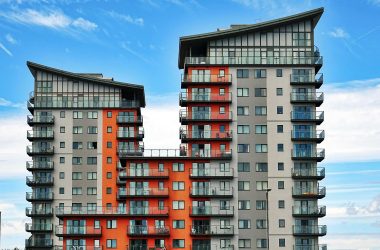Latest ABS data shows capital cities across the country experienced a net loss from internal migration of almost 12,000 people in the three months to March – that’s the largest quarterly decrease on record.
And it seems many of them headed to sunnier climates, with Queensland scooping the pool in a 100,000-strong interstate migration boom during the period.
The Gold Coast, Sunshine Coast and Wide Bay regions performed well off the back of this surge for a sea change. So too did lifestyle destinations like Port Douglas, Palm Cove and Airlie Beach, where median house prices have increased by almost 40 per cent in the past 12 months.
The future looks bright for the regional Victorian market too, where prices have jumped 10.5 per cent in the June quarter and almost 20 per cent annually.
REIV President Leah Calnan said the flexible working arrangements created by COVID-19 had allowed people to set their property sights beyond the city.
“It’s also true that there are plenty of investment opportunities in regional areas,” she said.
If you’re an investor wanting to capitalise on the regional property boom, we think that’s a smart move.
Airlie Beach case study
As just one example, looking at realestate.com.au we can see that at the time of writing rental vacancy rates are sitting at zero in Airlie Beach. This figure alone speaks volumes regarding the investment potential for this, and similar highly desirable locations.
Compounding the matter in this region is that the number of total properties in the rental market has been dropping month on month, with realestate.com.au currently showing zero properties available for rent. In fact, many of these properties are selling, with buyers moving into them after the tenants have vacated, thereby tightening the entire market even further.
What to look for
It’s important to remember that finding the right investment property is not as simple as sticking a pin in the map and crossing your fingers, or browsing the local real estate windows when you’re visiting your favourite local getaway destination.
Here are just some of the things you need to consider before adding a regional property to your portfolio.
Development Major developments in the pipeline, such as hospitals, new transport networks and retail developments, indicate the potential for strong future growth.
Employment Seek out regional hubs with industries that support the local economy and offer employment prospects.
Commutability Proximity to a capital city will always be a bonus for buyers, so hunt out areas with major train or highway routes.
Economic outlook Consider the local economy and how this may impact future property prices.
Statistical data Auction clearance rates, vacancy rates and rental yields offer an insight into regions with the greatest investment opportunity.
Lifestyle Finally, location, liveability, and desirability are the three biggest drivers of demand in regional property markets.
How The Property Mentors can help you to invest wisely in regional property
As with any investment, it’s important to do your due diligence before you jump headfirst into the regional property market. It’s always prudent to consult a professional and discuss your options first.
Whether you’re just starting out, or already well on your property journey, we can provide the guidance you need. Our team of strategic experts can help you weigh up the pros and cons and map out a plan that will help you maximise your investment potential.
Contact The Property Mentors for a discovery call today. We’re confident that we can help you grow your portfolio further.



